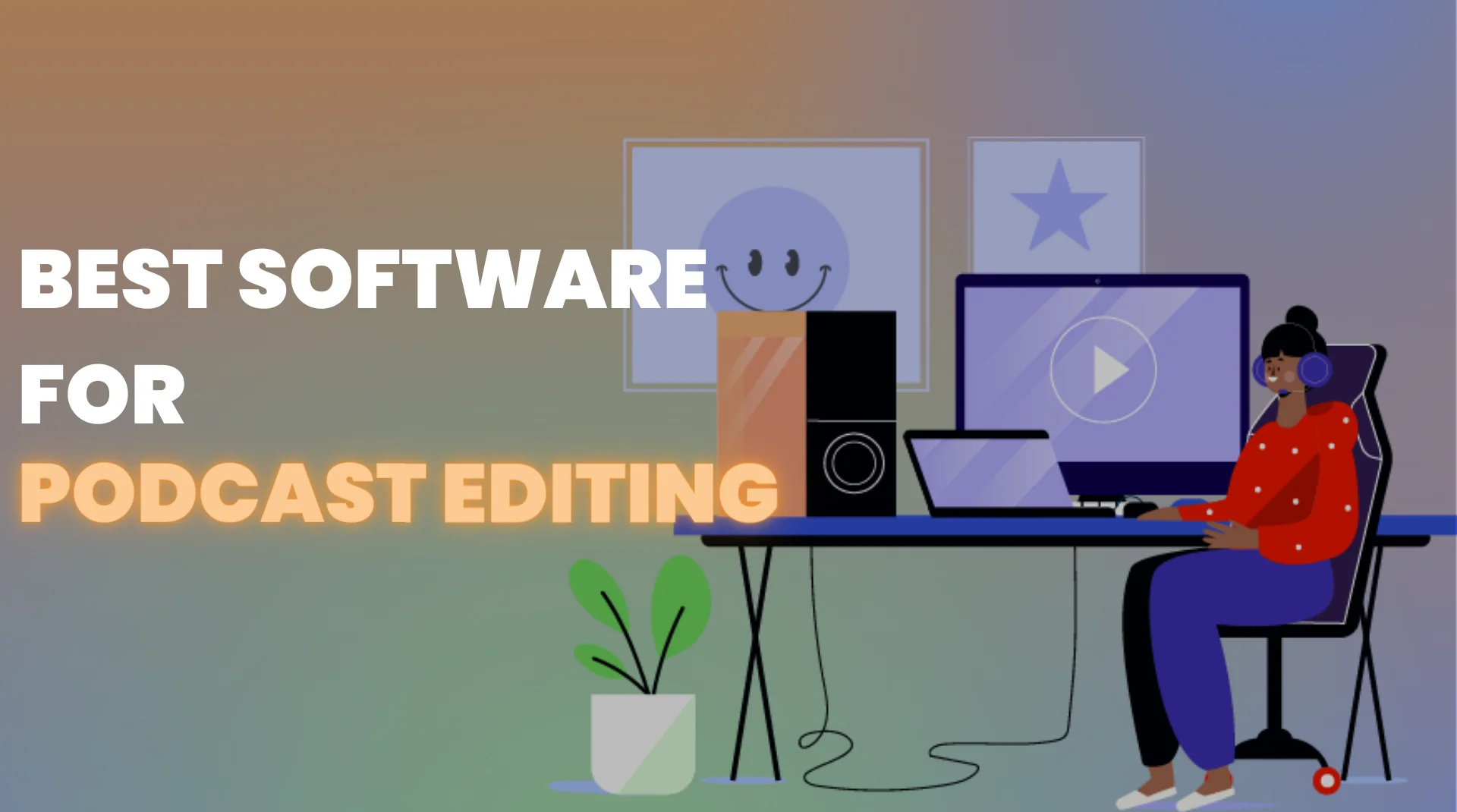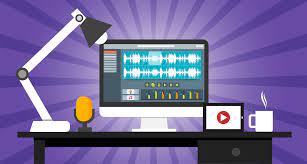Introduction
Podcasting has evolved from a niche medium into a mainstream content platform embraced by millions around the world. From entertainment and education to marketing and personal storytelling, podcasts offer a unique voice-driven format for audiences and creators alike. Behind every great podcast is a suite of powerful tools, with podcasting software playing a crucial role in the production, editing, and distribution of audio content. As of 2025, the podcasting software landscape has expanded dramatically, offering solutions for beginners, intermediate users, and professional studios.
This guide explores the best podcasting software in 2025, key features to look for, comparative analyses, and practical advice for choosing the right tool based on your needs, budget, and technical proficiency.
Chapter 1: The Role of Podcasting Software
Podcasting software refers to digital tools that help podcasters record, edit, mix, enhance, and publish audio content. It ranges from simple mobile apps to complex desktop suites with multi-track editing, automation, and integration features.
1.1 Functions of Podcasting Software
- Recording: Capture high-quality audio using microphones or digital interfaces.
- Editing: Cut, trim, enhance audio, and remove background noise.
- Mixing: Combine multiple tracks (e.g., host, guests, music, effects).
- Mastering: Finalize the audio with EQ, compression, and normalization.
- Publishing: Export audio files and distribute them through RSS feeds or integrated platforms.
1.2 Who Needs Podcasting Software?
- Independent creators
- Journalists and reporters
- Educators and researchers
- Businesses and marketers
- Nonprofits and advocacy groups
Chapter 2: Top Podcasting Software in 2025
2.1 Audacity
- Platform: Windows, macOS, Linux
- Price: Free (Open Source)
- Strengths: Robust editing tools, plugins, and community support
- Best For: Beginners to intermediates on a budget
2.2 Adobe Audition
- Platform: Windows, macOS
- Price: Subscription-based (part of Adobe Creative Cloud)
- Strengths: Professional-grade editing, spectral display, noise reduction
- Best For: Professionals, audio engineers, studios
2.3 Descript
- Platform: Windows, macOS
- Price: Freemium with advanced paid plans
- Strengths: AI transcription, text-based editing, screen recording
- Best For: Podcasters focused on speed and simplicity
2.4 Alitu
- Platform: Web-based
- Price: Subscription model
- Strengths: Automatic audio cleanup, hosting integration
- Best For: Beginners who want a streamlined process
2.5 Riverside.fm
- Platform: Web-based
- Price: Subscription model
- Strengths: Remote recording in high-quality video/audio
- Best For: Interview-based podcasts, remote collaboration
2.6 GarageBand
- Platform: macOS, iOS
- Price: Free with Apple devices
- Strengths: User-friendly interface, solid recording tools
- Best For: Mac users and beginners
2.7 Hindenburg Journalist
- Platform: Windows, macOS
- Price: One-time purchase with upgrades
- Strengths: Designed for spoken word, auto-leveling
- Best For: Storytellers, journalists, educators
Chapter 3: Essential Features to Look For
3.1 Ease of Use
- Intuitive interfaces
- Drag-and-drop functionality
- Guided tutorials
3.2 Recording Capabilities
- Multi-track recording
- Remote guest support
- Built-in or plugin audio filters
3.3 Editing Tools
- Waveform and spectral editing
- Keyboard shortcuts
- Undo/redo flexibility
3.4 Effects and Enhancements
- Equalization (EQ)
- Noise reduction
- Compression and normalization
3.5 Export and Distribution
- File format options (MP3, WAV, AAC)
- Direct publishing to podcast hosts
- Metadata editing
3.6 AI-Powered Tools
- Auto-transcription
- Smart editing suggestions
- Voice cloning and enhancement
3.7 Integration and Compatibility
- Hosting platforms (Spotify, Apple Podcasts, Buzzsprout)
- Collaboration tools (Zoom, Skype)
- Hardware compatibility (USB mics, audio interfaces)
Chapter 4: Choosing the Right Podcasting Software
4.1 Based on Skill Level
- Beginner: Alitu, GarageBand, Audacity
- Intermediate: Descript, Hindenburg
- Advanced: Adobe Audition, Pro Tools
4.2 Based on Podcast Type
- Interview Shows: Riverside.fm, SquadCast
- Storytelling: Hindenburg, Descript
- Business/Marketing: Alitu, Descript
- Educational: Audacity, GarageBand
4.3 Based on Budget
- Free: Audacity, GarageBand
- Affordable Subscriptions: Alitu, Descript
- Premium Professional: Adobe Audition, Pro Tools
Chapter 5: Podcast Hosting and Distribution Tools While not strictly podcasting software, hosting platforms often integrate with editing tools to streamline publishing.
- Buzzsprout: User-friendly, analytics, monetization options
- Anchor (Spotify for Podcasters): Free, easy to use, owned by Spotify
- Libsyn: Long-established, reliable, customizable
- Podbean: Monetization support, live streaming
- Transistor: Team collaboration, podcast networks

Chapter 6: Trends in Podcasting Software (2025 and Beyond)
6.1 Artificial Intelligence Integration
- Automated editing
- Transcription accuracy improvements
- Personalized voice assistants for production
6.2 Cloud-Based Production
- Real-time collaboration
- Cross-platform access
- Cloud backups and syncing
6.3 Video Podcasting
- Software like Riverside.fm and Descript offering video editing
- YouTube and TikTok podcast integrations
6.4 Mobile Podcast Creation
- Enhanced mobile apps with studio-quality recording
- Instant publishing features from smartphones
6.5 Accessibility Features
- Automatic captions and transcripts
- Multilingual support
- Inclusive audio processing for neurodiverse listeners
Chapter 7: Tips for Successful Podcasting
7.1 Invest in Quality Audio
- Use a good microphone and interface
- Record in quiet environments
7.2 Plan Your Content
- Create outlines and episode structures
- Develop a consistent format and tone
7.3 Master Your Tools
- Take time to learn your chosen software
- Explore keyboard shortcuts and automation
7.4 Edit Thoughtfully
- Remove filler words, long pauses, and distractions
- Add music or sound effects tastefully
7.5 Promote Your Podcast
- Use social media, newsletters, and SEO
- Collaborate with other podcasters
7.6 Monitor and Improve
- Use analytics to track listener engagement
- Solicit feedback from your audience
Conclusion Podcasting software is more powerful and accessible in 2025 than ever before. Whether you’re a beginner exploring your voice or a professional creating polished audio productions, there is a tool tailored for your needs. By understanding the features, capabilities, and trends in podcasting tools, you can make informed decisions that enhance the quality of your content and the reach of your voice.
In a world where everyone has a story to tell, podcasting software empowers you to share yours with clarity, creativity, and confidence.
